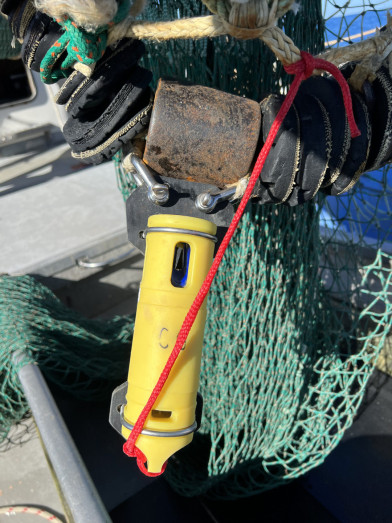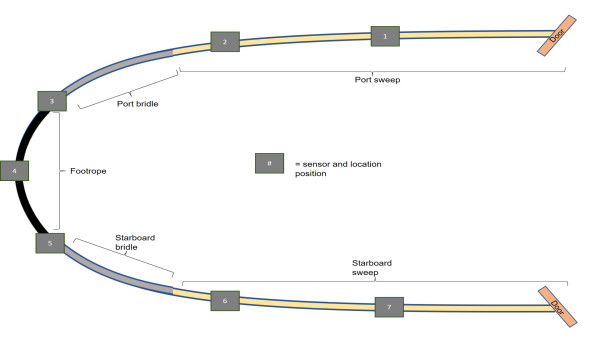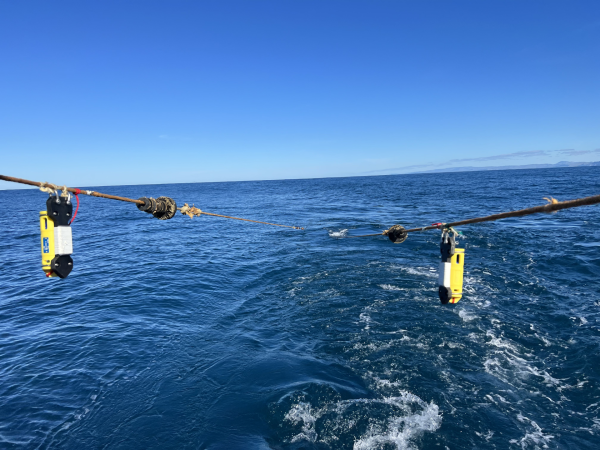Posted on 30 June 2023
Seafood Magazine: Visible footprints on the seafloor
- News
- 7 Minutes to read
Shared with permission from Seafood New Zealand Magazine - June 2023
Knowledge is power — and knowing exactly how large a trawl footprint is on the sea floor can help fishers and fisheries managers shift to making decisions based on empirical data instead of relying on existing assumptions.
New research from the Quantifying seafloor contact project has shown that innovative sensor technology can give accurate information about trawling footprints on the seafloor — and make visible the effects of different gear set-ups on those footprints.
Trawling is a key fishing method used for more than 100 years in New Zealand and the method that catches most of our finfish in tonnage terms. According to the Ministry for Primary Industries, in the 2020–2021 fishing year, 68% of all fish caught commercially in New Zealand was caught using bottom trawl or mid-water trawls.
This research helps meet the Challenge’s ambitions for a prosperous blue economy that’s sustainable, accountable, and in line with ecosystem-based management of the ocean.
Project Leader Oliver Wilson, Director at Sustainable Horizons Ltd, says the research shows that bespoke sensor technology can give fishers the information they need to avoid or reduce contact with the seafloor. Unwanted impacts of trawling include damage to habitats, bycatch, higher fuel costs, damage to fishing gear, higher fleet carbon footprint, and derelict gear left in the ocean.
He says accurate, high-resolution information helps answer the call to fill data gaps and use new technology, from New Zealand Chief Science Advisor Juliet Gerrard in the Report on the future of commercial fishing in Aotearoa New Zealand.
“Our research project is a stepping stone to using real-world data to help make evidence-based decisions.”
The project itself was a feasibility study to determine whether sensors attached to fishing gear could determine empirically based footprint information, based on real world observations. And could they tell differences between different gear setups?
“The project has answered that yes, they can. The technology and methodology trialled in this research project showed differences in seabed contact when making modifications to trawl gear.”
Previous assumptions about bottom contact were based on a logical rationale. In the absence of any data, 100% of the line between the doors, multiplied by the distance the net was on the bottom, constituted the trawl footprint — the net contacted the seafloor for that full width 100% of the time in every tow, says Oliver Wilson.
“It’s time to move to a data-driven approach because we should and can do better. But you can't do better until you understand. And understanding in this context means quantifying those differences and using the data to make appropriate decisions.”
Sensors accurately detect contact
The study deployed tilt-sensors, designed by ZebraTech, onboard an inshore trawler in the Hawkes Bay. The sensors collected bottom contact data at seven sites across different bottom gear parts over five voyages. The angle measured by each sensor was converted into an estimate of height above the seabed.

ZebraTech sensor onboard the vessel. Photo credit: Oliver Wilson

Sensor positions. Image credit: Oliver Wilson
Cameras were used on the net close to the sensors to verify clearance values and independently review the data. Researchers calculated contact adjusted footprints and compared them to assumed (nominal) trawl footprints.
Research results showed that the sensors can record accurate differences in bottom contact compared to existing assumptions, which tend to overestimate and oversimplify the extent of contact.
Read the report, Quantifying and reducing interactions between commercial fishing gear and the seabed in New Zealand on the Sustainable Seas website.
Sensors in the study could also accurately distinguish the effects of different gear on bottom contact and in different depths.
Two gear setups were tested in the study. Gear setup 1 used lighter sweep materials and discs to create lift in the sweeps, and gear setup 2 used heavier sweep materials without discs.
Results showed the sensors detected a 64% reduction in contact-adjusted trawl footprint for gear setup 1, compared to a standard assumed footprint. Gear setup 2, with the heavier material, still showed a 57% reduction in the trawl footprint when using the sensors, compared to a standard assumed footprint.
Both are significant results, says Oliver. The first highlights the importance of empirical results rather than working on assumptions. The second result shows a material difference between the two gear setups, associated with the sensor attachment sites.
These results reinforce that lightening parts of the fishing gear can lighten the extent of bottom contact. Contact also depends on the speed at which the gear is towed, and the characteristics of the location and seabed.
Better data helps manage fisheries and improve trawl efficiency
Accurate sensor data helps fisheries managers, policy makers, and kaitiaki accurately analyse trawl footprints to better understand and manage fisheries. It is about a data-driven future.
“For a policymaking or a regulatory framework discussion, you are going to better understand how the gear is interacting with the seabed. You can overlay different data to inform your assessment of whether trawling is what you want in a particular area or not — and what is appropriate in different areas”, says Oliver.
Fishers will be able to understand the extent to which their gear is contacting the bottom and for how long. They can then decide how they might want to alter gear or operations to reduce that level of contact and improve trawl efficiency.
“Trawl efficiency is about minimising fuel use and the wear and tear of gear while optimising catch compositions and catch-per-unit-effort returns.
The study demonstrated the capability of the technology and represents the start of a development pathway.”

Sensors in action in Hawkes Bay. Photo credit: Shade Smith
Measuring seabed interactions supports the sustainable use of fishery resources for economic returns and improved social outcomes, while conserving the health of New Zealand’s marine ecosystem. Understanding interactions with the seabed will help meet objectives of ecosystem-based management and support long-term food security in a way that reflects the need to minimise environmental impacts while harvesting seafood.
Broad uptake of sensors will advance knowledge
This study shows a methodology is available to generate a baseline of physical interaction between gear components and the seabed. The researchers recognise that the results are specific to the vessel and location in the study. But broad uptake of the sensors across the fleet and with different bottom gear will give much more refined data.
“The results are very encouraging and demonstrate the benefit of doing more work in this area”, says Oliver Wilson.
“Broader uptake of the sensors and the collection of empirical data will advance our knowledge of how environmental and operational factors can influence trawl footprints.”
A collaborative work programme that allows for a comprehensive comparison of bottom contact across a range of gear setups and circumstances will support fishers and decision makers in the future.
Researchers recommend developing reference sheets that indicate the potential bottom contact changes associated with a range of gear changes. That information will support broader innovation and uptake of sensors across the commercial fishing fleet and integrate data collection into normal fishing operations. They recommend expanding the number of sensors per tow and expanding camera validation work to improve understanding of what causes differences in sensor readings.
“Trawling is often a highly emotive and debated subject. A lot of that discussion is around assumptions and emotions, and we are trying to provide data for a more informed discussion.
Our research has demonstrated the feasibility of sensor technology for a more informed data-driven position on bottom contact. We recognise our work has been conducted on one vessel in one area of New Zealand. However, this project has met its objective to prove that we can move to empirically informed operational improvements in trawl efficiency and associated management decisions.
We are not trying to make the decisions. We are trying to provide the data that people can then use to make decisions.”